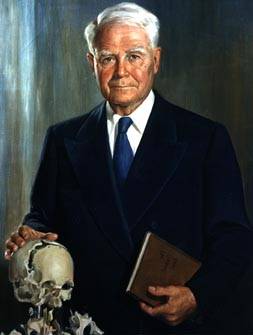
Cranial was discovered and developed by William Garner Sutherland, D.O. (1873-1954) in the early to mid 1900s. Dr. Sutherland was a pupil of Andrew Taylor Still, D.O., the founder of osteopathy. Sutherland discovered that there is a subtle yet palpable rhythmic motion that moves through all the tissues of the body, including the cranium, and that this motion is fundamental to a healthily, functioning physiology.
Dr. Sutherland’s discovery came out of an inspirational thought that came to him one day while wandering through Dr. Still’s College of Osteopathy at Kirksville. He was looking at the detail of the sutures in a disarticulated skull and the thought struck him that the detailed suture between the bones was “beveled like the gills of a fish and indicating articular mobility for a respiratory mechanism.” His initial reaction was that this was a crazy thought, because, of course, the conventional view is that the bones of the skull are fused and don’t move at all. Nevertheless, the thought struck him deeply and he spent the next 30 years trying to disprove this theory through extensive study and through experiments on himself. He eventually became convinced that his original thought did indeed have some substance and he started to write about it and to teach his ideas to other osteopathic physicians.
Sutherland teaching comprised his observation that the 26 bones of the skull did indeed permit a tiny degree of physiological motion, which was expressed through the skull, the membranes, the fluids, including the cerebrospinal fluid, and the brain within. Dr. Sutherland also came to realize that this motion was not just limited to the cranium but was expressed throughout the whole body, in fact through every cell of the body, and was essential to health. He therefore described it as the “primary respiratory mechanism” as fundamental to our health as breathing.
Dr. Sutherland’s discovery has given those of us trained in this field, whether osteopaths or cranio-sacral therapists a unique way to observe the intelligence of the body at work, and by listening to this intelligence has enabled us to apply the appropriate treatment for that patient at that moment.
Learn more about osteopathy.
